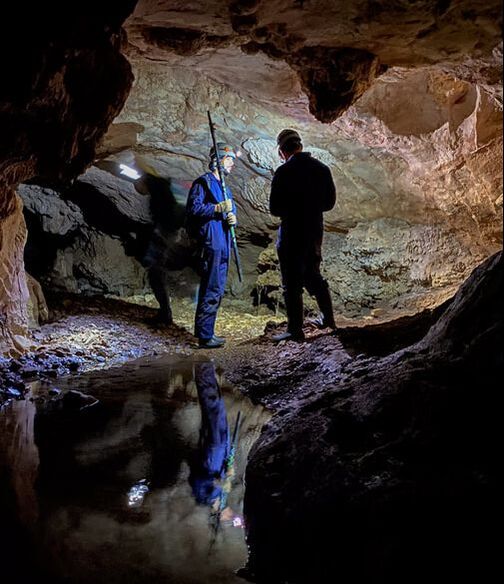Aim 1. Exposure to Pd in winter bat roosts across southeastern Australia
Screening for Pd and bats exhibiting WNS
Our research screening program will sample cave substrates in winter roosts and captured, winter-active bats for Pd. A collaboration with the Biosecurity and Policy Implementation Division of the Commonwealth Department of Agriculture will develop new techniques for rapid, field-based detection of Pd, validated against a national database. These methods would bring substantial benefits to screening for Pd at all levels.
If Pd is detected, we will implement the biosecurity measures recommended by Wildlife Health Australia, informed by the U.S. National WNS Decontamination Protocols (U.S. Fish and Wildlife Service 2020).
If Pd is detected, we will implement the biosecurity measures recommended by Wildlife Health Australia, informed by the U.S. National WNS Decontamination Protocols (U.S. Fish and Wildlife Service 2020).
Measure the temperature and humidity within winter cave hibernacula
|
Cave microclimate is a primary determinant of Pd prevalence, with most severe WNS die-offs occurring in winter cave roosts that contain high humidity (>95%) and relatively warm temperatures compared to North American hibernation caves (Fig. 1).
To increase our knowledge of the roost microclimates selected by hibernating bats, we collated existing knowledge of winter roost caves and, in collaboration with local expert speleologists, survey the most important roosts across regional populations for hibernating bats. We deployed multiple temperature and humidity loggers in caves across the climatic range to record cave microclimate conditions experienced by hibernating bats. These microclimate data are used examine factors influencing roost microclimate selection and develop a predictive model of the relationship between mean annual surface temperature at selected cave hibernacula for different bat species and locations across southeastern Australia. This is a critical step to providing accurate spatial maps of the suitability of winter cave microclimates for Pd growth and hence the likely exposure of hibernating bats to Pd prevalence across their geographic ranges, were the fungus to be introduced into Australia. |


